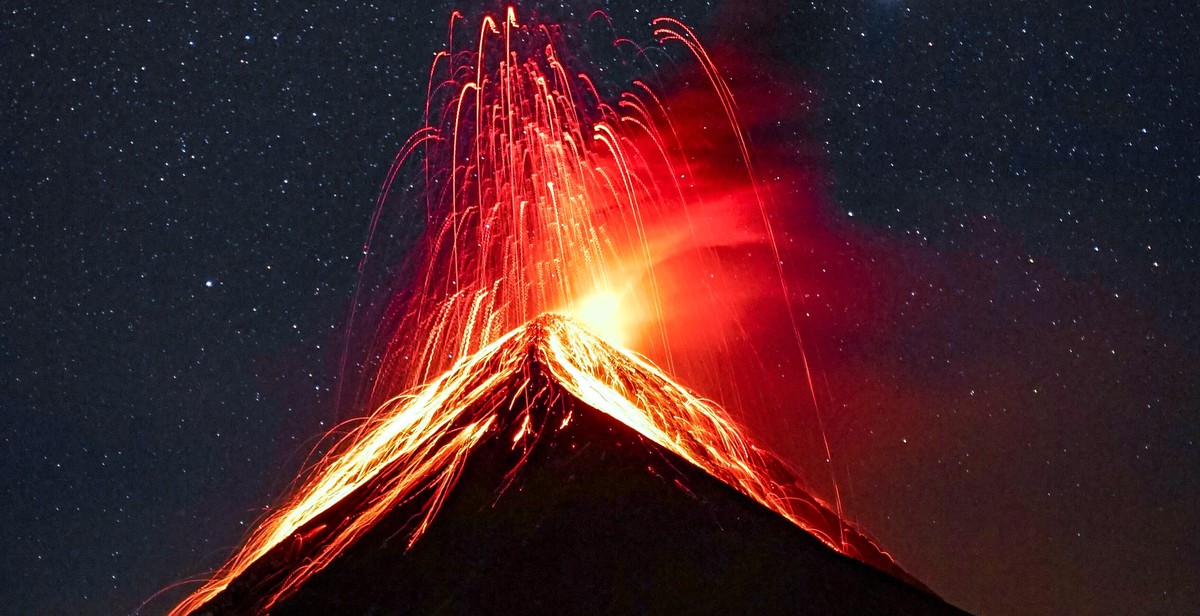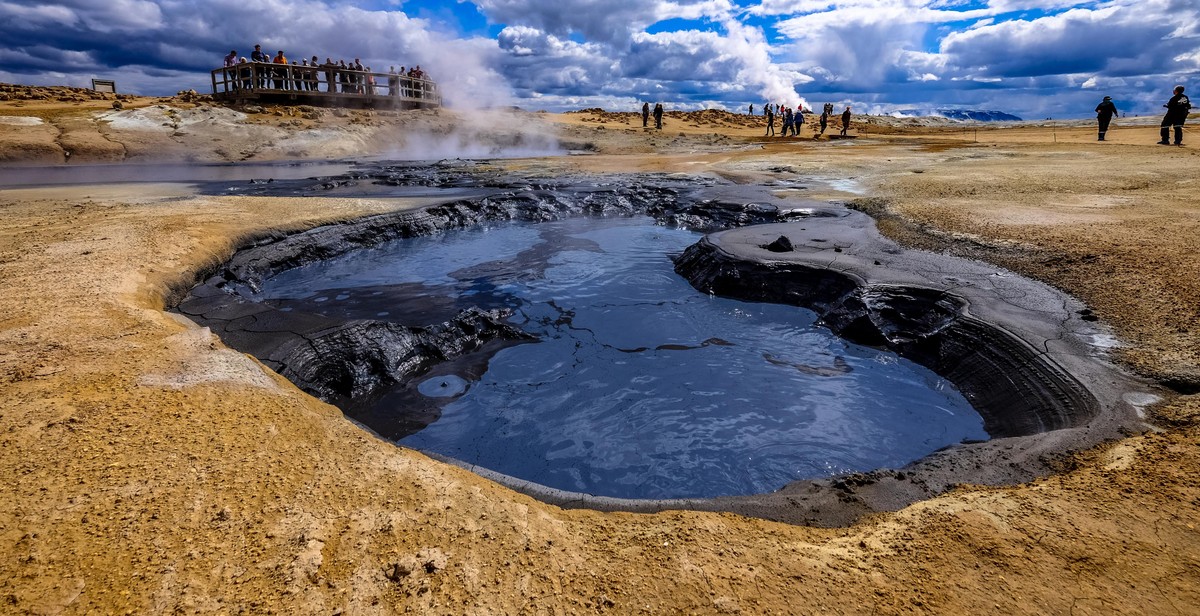How to Interpret Volcanic Seismic Data: Analyzing Earthquake Activity for Volcanic Monitoring
Volcanic eruptions can have devastating effects on human life and property. Therefore, it is crucial to monitor volcanic activity and predict eruptions to minimize the risks associated with them. One of the most effective ways of monitoring volcanic activity is by analyzing the seismic data generated by the earthquakes that occur before, during, and after an eruption.
Interpreting volcanic seismic data can be a complex task that requires expertise and experience. This article will provide insights into how to interpret volcanic seismic data and analyze earthquake activity for volcanic monitoring. We will discuss the different types of seismic waves, how they are generated, and how they can be used to understand the behavior of volcanoes. We will also explore the different techniques used to analyze and interpret seismic data, such as spectral analysis, waveform analysis, and amplitude analysis.
Moreover, we will cover the various tools and technologies used in volcanic monitoring, such as seismometers, tiltmeters, and GPS receivers. We will also highlight some of the challenges associated with interpreting seismic data and how they can be overcome.
By the end of this article, you will have a better understanding of how volcanic seismic data can be used to monitor and predict volcanic eruptions, and how this information can be used to save lives and property.

What is Volcanic Seismic Data?
Volcanic seismic data is a type of data that is collected from the monitoring of earthquakes and other seismic events that occur in and around a volcano. This data is used to interpret the activity of the volcano and to determine the likelihood of an eruption.
Types of Volcanic Seismic Events
There are several types of seismic events that can occur at a volcano. Some of the most common types of volcanic seismic events include:
- Volcano-tectonic earthquakes: These earthquakes are caused by the movement of magma or volcanic gases beneath the surface of the volcano. They are typically shallow and can be felt by people on the surface.
- Long-period earthquakes: These earthquakes are caused by the movement of magma within the volcano. They are characterized by a long duration and a low frequency.
- Harmonic tremors: These are continuous, rhythmic seismic events that are caused by the movement of magma or volcanic gases within the volcano. They can last for hours or days and are often a precursor to an eruption.
- Low-frequency earthquakes: These earthquakes are caused by the movement of fluids within the volcano. They are typically associated with the movement of magma or volcanic gases.
| Type of Event | Cause | Characteristics |
|---|---|---|
| Volcano-tectonic earthquakes | Movement of magma or volcanic gases | Shallow, felt on surface |
| Long-period earthquakes | Movement of magma | Long duration, low frequency |
| Harmonic tremors | Movement of magma or volcanic gases | Continuous, rhythmic, precursor to eruption |
| Low-frequency earthquakes | Movement of fluids | Associated with movement of magma or volcanic gases |
Understanding the different types of volcanic seismic events is crucial for interpreting volcanic seismic data and predicting volcanic activity. By monitoring seismic activity at a volcano, scientists can better understand the behavior of the volcano and take appropriate measures to protect nearby communities.

Why is Volcanic Seismic Data Important for Monitoring?
Volcanic seismic data is crucial for monitoring and analyzing earthquake activity associated with volcanic activity. The data collected from seismic instruments provides valuable information about the internal processes of a volcano, including magma movement, gas emissions, and potential eruptions.
Risk Assessment and Mitigation
Volcanic seismic data helps in assessing the potential risks associated with volcanic activity. By analyzing the frequency, magnitude, and location of seismic events, scientists can determine the likelihood of an eruption. This information is used to develop risk assessment and mitigation strategies to protect nearby communities and infrastructure.
Early Warning Systems
Volcanic seismic data is also critical for developing early warning systems that provide advance notice of an impending eruption. By monitoring seismic activity in real-time, scientists can detect changes in volcanic behavior and issue warnings to authorities and the public. This allows for timely evacuations and other emergency measures to be put in place.
Volcanic Eruption Forecasting
Volcanic seismic data is used to forecast volcanic eruptions by analyzing patterns and trends in seismic activity. By studying the seismic signals associated with previous eruptions, scientists can identify precursor events that indicate an imminent eruption. This information is used to improve volcanic eruption forecasting and provide more accurate predictions of volcanic behavior.
| Type | Description |
|---|---|
| Volcano-Tectonic (VT) earthquakes | Caused by the movement of magma and fluids in the volcano’s plumbing system |
| Long-period (LP) earthquakes | Associated with the movement of magma beneath the surface |
| Harmonic tremors | Continuous, rhythmic signals caused by the movement of magma and gas |
In conclusion, volcanic seismic data is essential for monitoring and analyzing earthquake activity associated with volcanic activity. It provides valuable information for risk assessment and mitigation, early warning systems, and volcanic eruption forecasting. By analyzing seismic data, scientists can gain a better understanding of a volcano’s behavior and potential hazards, ultimately helping to save lives and protect communities.

Interpreting Volcanic Seismic Data
Interpreting volcanic seismic data is crucial for monitoring volcanic activity and predicting potential eruptions. Seismic data is collected through the use of seismometers, which measure ground vibrations caused by earthquakes and other seismic events. These vibrations can provide important information about the behavior of magma beneath the surface of a volcano.
Seismic Event Identification
The first step in interpreting volcanic seismic data is identifying seismic events. Seismic events can be caused by a variety of factors, including tectonic activity and volcanic activity. Volcanic earthquakes are typically characterized by their shallow depth and their association with other volcanic activity, such as gas emissions or ground deformation.
Magnitude and Frequency of Seismic Events
The magnitude and frequency of seismic events can provide important information about the behavior of magma beneath the surface of a volcano. Large earthquakes with high magnitudes can indicate the movement of large volumes of magma, while frequent small earthquakes can indicate the movement of smaller volumes of magma. Monitoring changes in the magnitude and frequency of seismic events over time can provide insight into changes in volcanic activity.
Seismic Event Location
The location of seismic events can also provide important information about volcanic activity. Seismic events that occur directly beneath a volcano can indicate the movement of magma within the volcano. Seismic events that occur outside of a volcano can indicate tectonic activity or the movement of magma beneath the surface of the surrounding area.
Seismic Event Duration
The duration of seismic events can also provide important information about volcanic activity. Short-duration seismic events, known as earthquakes, can indicate sudden movements of magma or rock. Long-duration seismic events, known as tremors, can indicate the continuous movement of magma or the buildup of pressure within a volcano.
| Date | Time | Location | Magnitude |
|---|---|---|---|
| 2021-07-01 | 14:32:15 | 1 km beneath Volcano X | 3.5 |
| 2021-07-02 | 02:45:23 | 5 km from Volcano X | 2.1 |
| 2021-07-02 | 07:12:10 | 2 km beneath Volcano X | 2.9 |
Interpreting seismic data can be complex, and it requires expertise in seismology and volcanic monitoring. However, understanding the basics of seismic event identification, magnitude and frequency, location, and duration can provide important insights into volcanic activity.

Tools for Analyzing Volcanic Seismic Data
When it comes to analyzing volcanic seismic data, there are several tools that are crucial to the process. These tools include:
Seismometers
Seismometers are the primary tool used to record seismic activity in and around a volcano. These instruments measure the ground motion caused by earthquakes and volcanic activity. Seismometers come in a variety of types and configurations, including:
- Short-period seismometers, which are sensitive to high-frequency seismic waves
- Long-period seismometers, which are sensitive to low-frequency seismic waves
- Broadband seismometers, which can record a wide range of frequencies
Data Acquisition Systems
Data acquisition systems are used to collect seismic data from seismometers. These systems typically consist of a data logger, which records the seismic data, and a power supply. Some data acquisition systems also include telemetry capabilities, allowing the data to be transmitted in real-time to a monitoring center.
Data Analysis Software
Data analysis software is used to process and interpret the seismic data collected by seismometers. This software can be used to identify earthquake locations, determine earthquake magnitudes, and detect changes in volcanic activity. Some examples of data analysis software used in volcanic monitoring include:
- SeisComP, an open-source software package used for real-time seismic data processing and analysis
- Earthworm, a software system used for earthquake monitoring and data acquisition
- Matlab, a numerical computing environment used for data analysis and visualization
| Seismometer Type | Frequency Range | Advantages | Disadvantages |
|---|---|---|---|
| Short-period | 1-10 Hz | High sensitivity to small earthquakes | Less sensitive to large earthquakes and low-frequency seismic waves |
| Long-period | 0.05-1 Hz | High sensitivity to large earthquakes and low-frequency seismic waves | Less sensitive to small earthquakes |
| Broadband | 0.008-50 Hz | Can record a wide range of frequencies | More expensive than short-period or long-period seismometers |

Conclusion
Interpreting volcanic seismic data is a crucial task for monitoring and predicting volcanic activity. By analyzing earthquake activity, scientists can gain insights into the behavior and state of a volcano. In this article, we have discussed various techniques and tools used for interpreting volcanic seismic data.
Firstly, we looked at the different types of seismic waves and their characteristics. We learned that P-waves are the fastest and travel through solid and liquid material, while S-waves are slower and only travel through solid material. By analyzing the arrival times and amplitude of these waves, scientists can determine the location and magnitude of earthquakes.
We also discussed the importance of frequency content analysis and how it can help in identifying different types of earthquakes. Low-frequency earthquakes are associated with volcanic activity and can be used as a precursor to eruptions. On the other hand, high-frequency earthquakes are typically associated with tectonic activity and are not directly related to volcanic activity.
Finally, we looked at the different tools used for interpreting seismic data, such as seismographs and spectrograms. These tools help in visualizing and analyzing seismic data in real-time, allowing scientists to make accurate predictions and take necessary precautions.
In conclusion, interpreting volcanic seismic data is a complex and challenging task, but with the right techniques and tools, it can be done effectively. By monitoring and analyzing earthquake activity, we can gain valuable insights into the behavior of volcanoes and take necessary measures to prevent disasters.
